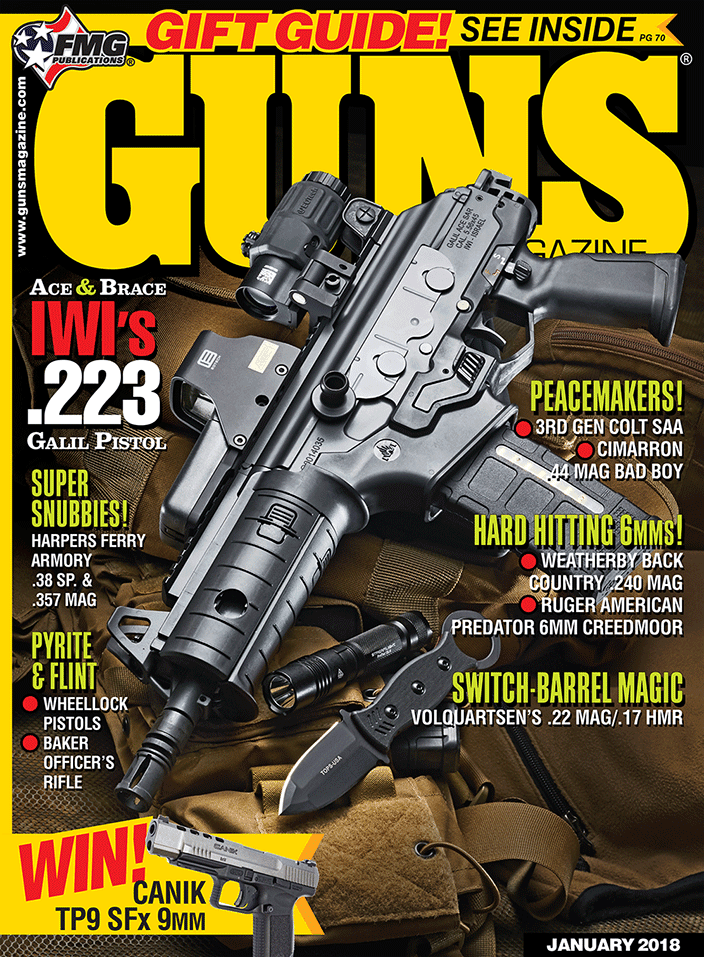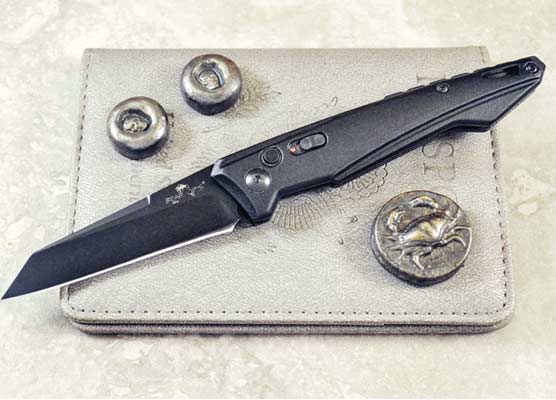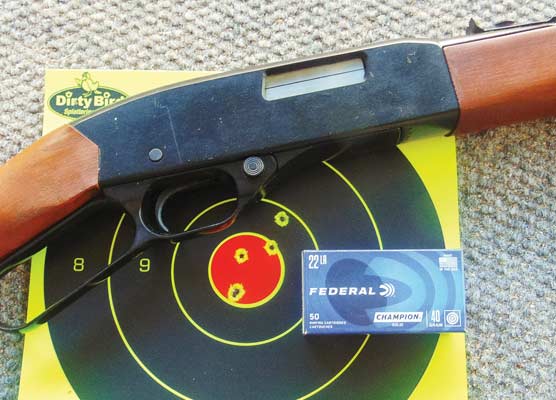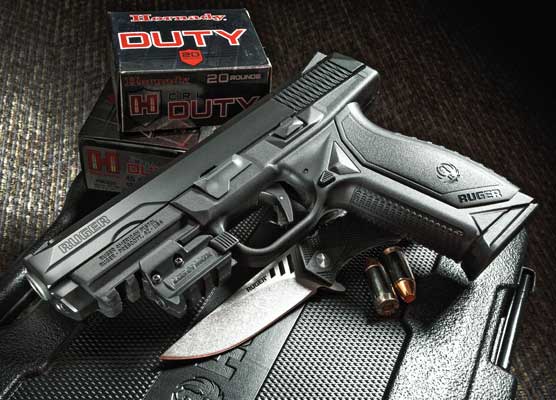The Creedmoor Family Grows
Hornady’s New 6mm Is A Peach
About three seconds after the 6.5 Creedmoor cartridge was announced, speculation began on necking the case to other diameters. One of the more popular ideas was a 6mm on the Creedmoor case, with several wildcatters building their own. Hornady keeps a pretty close eye on what shooters are doing and what they seem to want, so the announcement of the 6mm Creedmoor as a factory cartridge was hardly a surprise.
Of course, three seconds later the first cry of “What’ll it do the (fill in the blank) doesn’t do already?” Next we hear from all the sage business experts, “Hornady is only doing this to create demand and increase sales!” The nerve of those people, trying to increase revenue and grow their business!
Kidding aside, it’s a fair question. Other than the obvious reason of wanting to sell product, what are the practical reasons for introducing new cartridges?
Cartridges are designed to meet specific priorities. Circa 1900, most major nations were equipping their armed forces with bolt-action, magazine-fed rifles. For the military, one factor takes precedence over everything else: reliability. The rifle had to work and keep on working. Cartridges had to feed, chamber, extract, and eject when used in the popular rifle designs of the era.
Successful cartridges shared a number of characteristics. They were fairly long relative to diameter for smoother feeding. Cases were tapered from base to shoulder, with gentle shoulder angles, factors believed to make for easier chambering and locking, and for extraction of fired cases. Case necks tended to be long, one caliber length or more, to hold bullets securely.
More than a half century later the US military was looking for cartridges better suited to semi- and full-automatic firearms, and as always, reliability was the number one concern. The 7.62 NATO and 5.56 (commercially introduced as the .308 Win and .223 Rem), were shorter and stronger in the web/rim area. They shared the same features intended to enhance feeding, chambering, and extraction such as a tapered body and moderate shoulder angle. Incidentally, the more recently adopted .338 Lapua Magnum also shares those attributes.
Why does this matter? If we take America’s military cartridges, the .30-06 and .308, their offspring, .270 Win and .243 Win, add the third military cartridge, the .223 Rem, and you have five of the most popular cartridges in America. The point is, the parent cartridges were designed to meet the needs of the military, with reliability paramount.
For civilian rifle enthusiasts, hunters and competitive shooters, reliability is important but we want other things as well. We like higher velocities, we like accuracy, and those of us who reload like long case life. Sometimes manufacturers want a cartridge to fit a certain action.
For example, say we have a short-action rifle but still want performance fairly close to the popular .30-06. We can shorten the ’06 case, and to maximize powder capacity give the cartridge a sharper shoulder, say 30 degrees, and a short case neck. We’d have a modern-looking cartridge, which might have been designed yesterday, though in fact we’d be a century late. Savage did it in 1920 with the .300 Savage for the Model 1899 rifle.
Thanks to benchrest competition, a great deal has been learned about case design and its effect on accuracy. Looking at the features of two outstanding benchrest cartridges, 6mm PPC and 6mm BR, we see a short powder column, little body taper, a 30-degree shoulder and a fairly long case neck.
So what do the 6mm and 6.5mm Creedmoor cartridges tell us about the goals of the designers? First, they believe the interest in longer range shooting is not a fad but is—and will remain—a big part of rifle shooting. They wanted a cartridge made to be compatible with the long, ballistically efficient bullets long-range shooters demand.
They built in the accuracy-proven features of the 6mm PPC and 6mm BR cartridges in the 30-degree shoulder and a fairly long case neck. In order to keep heavier bullets supersonic out past 1,000 yards they wanted effective case capacity greater than the PPC/BR cartridges, more like the capacity of the .243 Win. Finally, the whole package had to be compatible with the 2.8-inch magazines most commonly seen on American short-action rifles.
The rifle I used for first testing the 6mm C is a Ruger American Predator. As we are primarily interested in the cartridge, I’ll just say the Predator proved completely reliable and very accurate. The Ruger American is one of the best of the “value priced” rifles.
The trigger on the Predator is crisp and consistent enough but too heavy for my tastes, breaking at 3-3/4 pounds at its lightest setting. Considering the accuracy potential of this rifle I’ll most likely replace it with a Timney. The rifle comes with a flat Picatinny rail (which I’ll most likely replace with a 20- or 25-MOA base) to which I attached a Nightforce NXS 2.5-10×42, a very reliable scope and one I greatly admire.
For testing I used Hornady factory loads with the 108-grain ELD-M bullet, and handloads with Hornady brass and the same bullet. The factory loads are rated at 2,960 fps from a 24-inch barrel. I was surprised when they barely broke 2,800 fps from the 22-inch barrel of the Predator. For a moment I even lost faith in the Oehler 35P chronograph (blasphemy!), but a check with my Anschutz .22 rifle and match ammo was right on. A second trusted chronograph, a CED Millennium, gave almost identical results.
Hornady has handload data for the 6mm Creedmoor online. One of the loads they show with the 108-grain ELD-M bullet is 40.4 grains of Alliant RL-17. They show a muzzle velocity of 3,050 fps, barrel length not shown. In the 22-inch barrel of my Predator this load produced 2,960 fps. In the longer 26- to 30-inch barrels preferred by long-range competitive shooters, this load should easily crack 3,100 fps.
Entering the data in the JBM ballistics calculator indicates the 108-grain ELD-M bullet with its 0.270 G7 ballistic coefficient, launched at 2,960 fps stays supersonic to a bit over 1,200 yards. Launching at 3,100 fps from a longer barrel will extend this 100 yards or so.

The Hornady 108-grain ELD-Match bullet (center) shown seated to the proper overall length to fit the
2.8-inch magazine box in the 6mm Creedmoor (left) and .243 Win (right). When filled to the brim, the .243
Win case has slightly greater capacity, however, long bullets seated to fit 2.8-inch magazines project well
into the case, so effective case capacity of the two cartridges is virtually identical.
Rifles for the 6mm Creedmoor are being made with fast-twist barrels. Ruger uses a 1:7.7 twist, while Browning and Savage have recently introduced 6mm CM rifles with 1:7.5 twists. Ideal for long bullets, such twists are not as well suited to light, fast bullets that may not give best accuracy and in extreme cases (e.g. 55-grain bullets at 4,000 fps) may even disintegrate in flight.
Currently Hornady has two factory 6mm Creedmoor loads, the 108-grain Match at 2,960 fps and the 103-grain ELD-X hunting bullet at 3,050 fps. Certainly more factory loads are forthcoming though I don’t expect to see many with bullets weighing less than 100 grains.
Among long-range target shooters the 6mm Creedmoor seems to be catching on. Ruger has already dropped the .243 Win chambering from the Precision Rifle, replacing it with the 6mm Creedmoor. What about in the hunting field?
If your goal is an all-around varmint/big game cartridge and you want to shoot bullet weights from 55 to 100 grains, the .243 Win with a 1:9 or 1:10 twist is your huckleberry. The 1:10 may be a compromise twist, but sometimes an intelligent compromise is the best solution. If you want to shoot 100- to 115-grain low-drag bullets, the 6 CM with a fast-twist barrel is the answer.
My only reason for wanting longer low-drag bullets for hunting is for bucking wind. Just as flatter trajectories make range estimation less critical, slippery bullets make wind judgment less critical. I’d be happy with a fast-twist .243 Win, but from the manufacturers’ viewpoint, such twists would likely lose more customers than they would gain.
I like the capability to use modern low-drag bullets in a lightweight, light-recoiling 6mm rifle. It seems the only way to get it (other than a custom barrel), is with the 6mm Creedmoor, which makes it a very attractive option.
American Predator
Maker: Ruger
411 Sunapee St.
Newport, NH 03733
(336) 949-5200
www.ruger.com
Caliber: 6mm Creedmoor (tested, many others)
Capacity: 4
Stock: Moss Green Synthetic
Sights: None, scope rail provided
Barrel length: 22 inches, muzzle threaded 5/8-24
Twist: 1:7.7 inch
Material: Alloy Steel
Metal finish: Matte Black
Weight: 6.6 pounds
Overall length: 42 inches
Length of pull: 13.75 inches
Price: $529
Hornady
3625 West Old Potash Hwy.
Grand Island, NE 68803
(800) 338-3220
www.hornady.com






